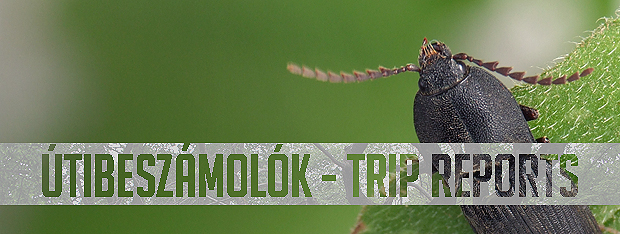
TRIP REPORTS
21-22.X.2012.
Zemplén
Although summer was
slowly turning into autumn, no
beetles had been caught for weeks, so it was about time to go for a
collecting
trip. We thought it would be worthwhile exploring the conifer forests
of the
Zemplén Mountains to seek for the ebony click beetle (Ampedus nigrinus) that we
found in the Kőszeg Mountains in March. Joined by Petra, Nikola and
Attila, we
started our two-day trip very early in the morning. At
the crack of dawn we had already been
walking along the river Bodrog wrapped in mist. Our plan was to spend
the first
day in Füzérradvány Castle Park, and the second one
in a valley cut deep into
the mountains. We had great weather the whole time and it was kind of
refreshing to leave the smoggy city for a while and gaze at the colours
of
autumn in the forests instead.
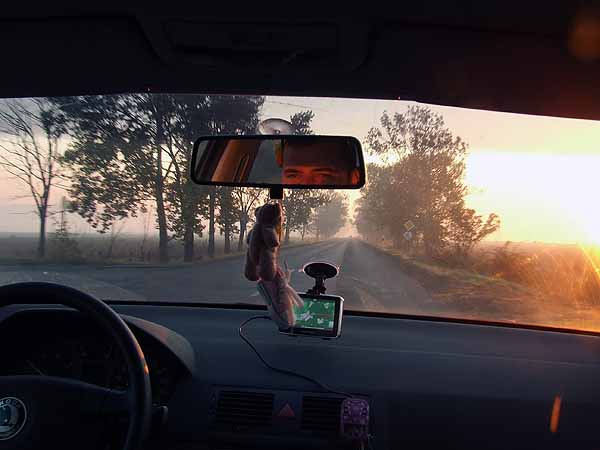
The sun came up around 6:30 AM.
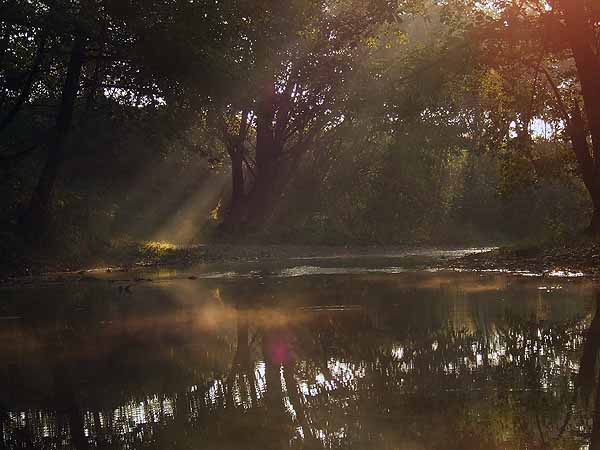
Our first stop near the Bózsva Stream.
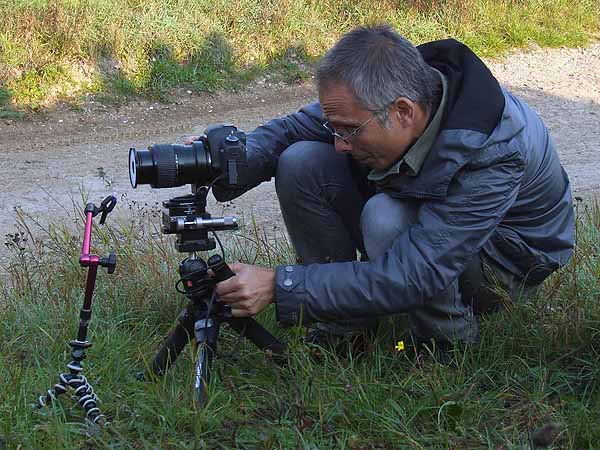
Thanks to the chilly dawns and calm frosty mornings, Nikola had the chance to test his camera.
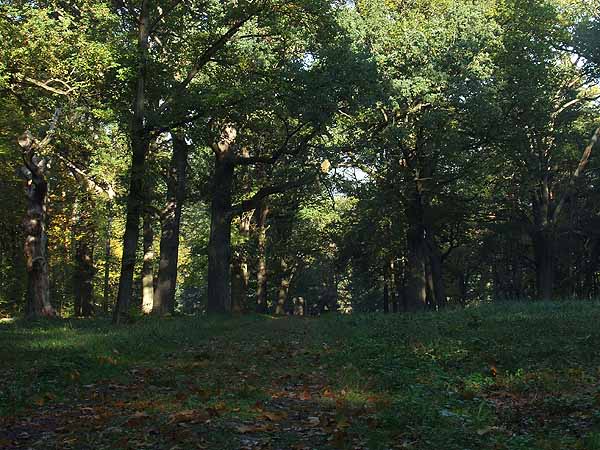
The next morning a local friend of ours, Gábor Hegyessy showed us the best trees for beetle collecting in the park while his family was gathering tons of mushrooms.

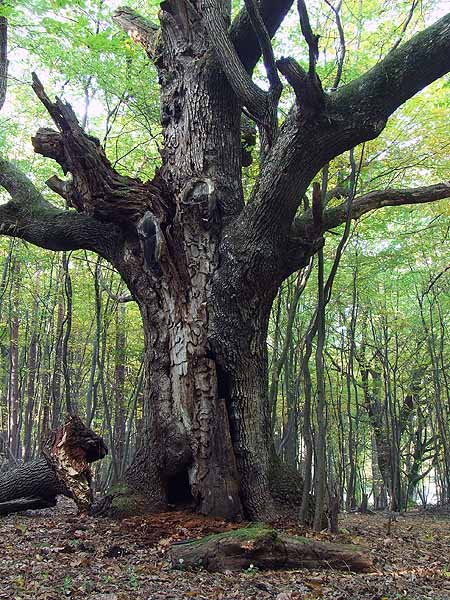
The ancient hollow oak in
which Gábor has found the
click beetle Brachygonus ruficeps (Mulsant et Guillebeau, 1855)
formerly this
year. Although all our efforts to find this tiny little species were in
vain,
we had the luck to find the click beetle Ampedus hjorti (Rye, 1905),
previously
unknown in this region.

Ampedus hjorti (Rye, 1905).
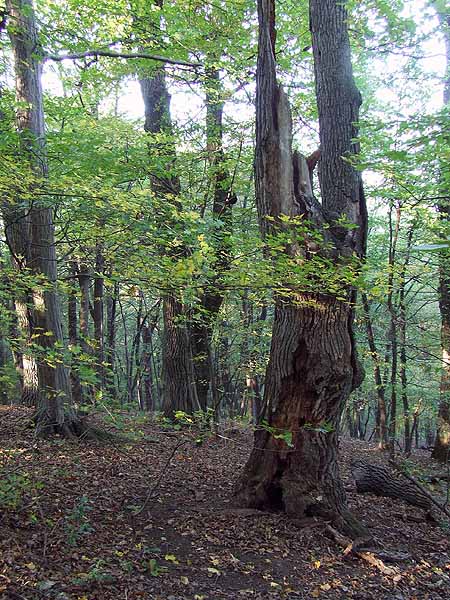

A sizeable larva of the protected rusty red click beetle Elater ferrugineus Linnaeus, 1758.
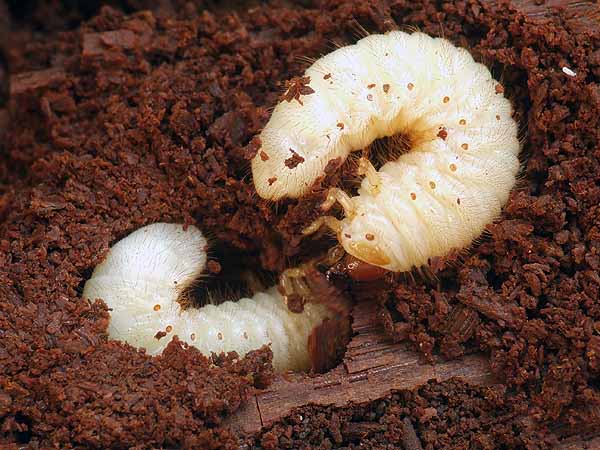
Grubs of the variable chafer, Gnorimus variabilis (Linnaeus, 1758). This protected beetle has not been recorded formerly in the castle park.
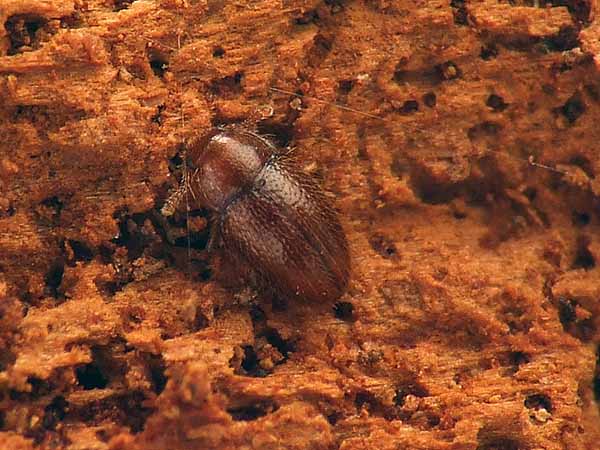
The tiny-sized (
Mycetaea subterranea (Fabricius, 1801) can be found in hollow logs and under bark.
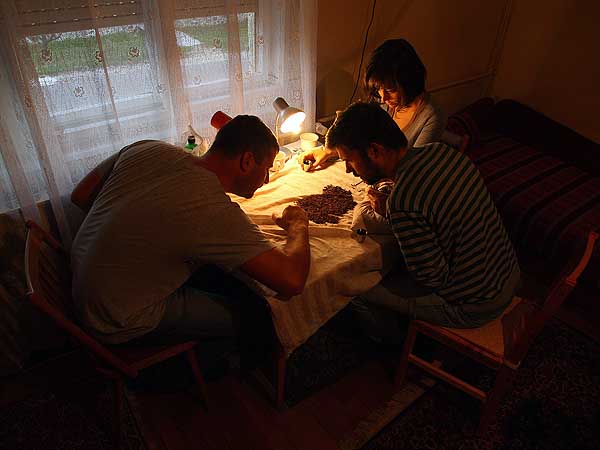
In the evening we headed
for our accommodation in
Pálháza. We had a big dinner in the nearby Tölgyfa
Étterem (Oak Tree Restaurant),
and then, at the end of the day, the tiny beetles were extracted from
the wood
mould collected during the day.
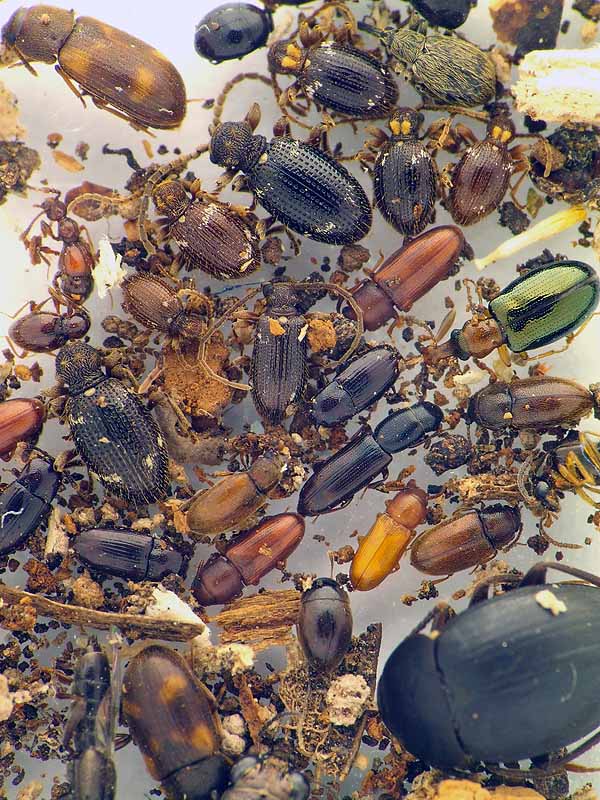
The wood under the loose bark of old dry oaks was quite rich in beetles. Spider beetles, darkling beetles, hairy fungus beetles appeared from the sifted material.
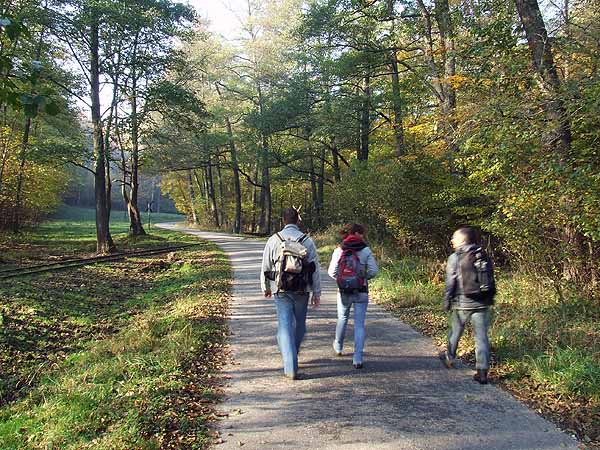
The next day we started our trip at Kőkapu rushing up the hills.
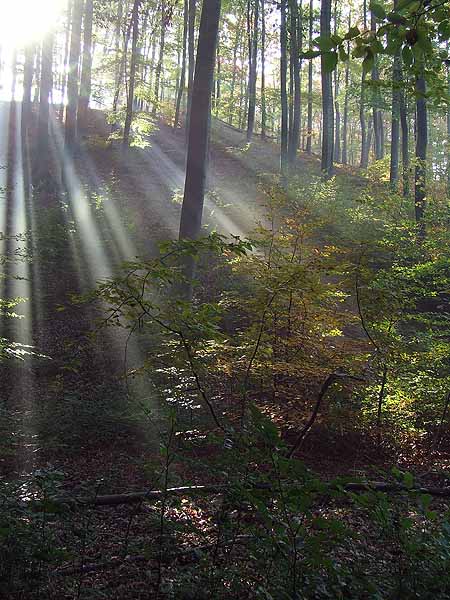
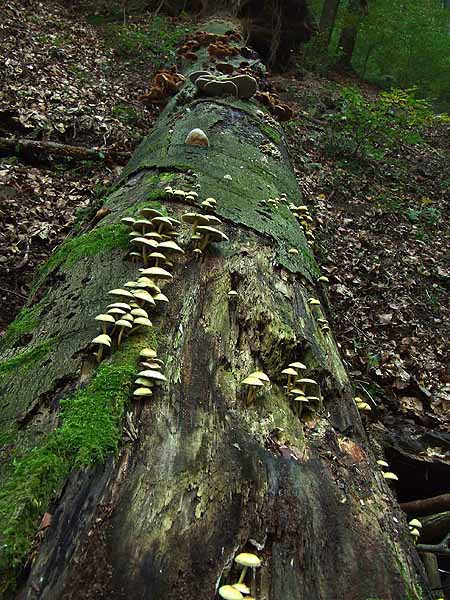
Thousands of mushrooms were seen in the damp valley.
The fallen trunks were covered by brackets and other wood-decay fungi.
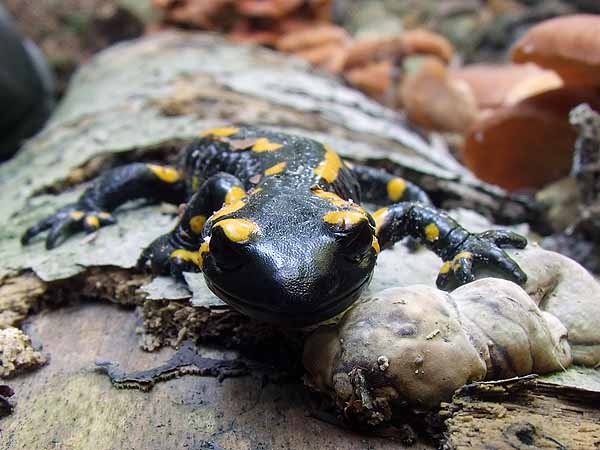
Fire salamander sneaking out from under a stone.
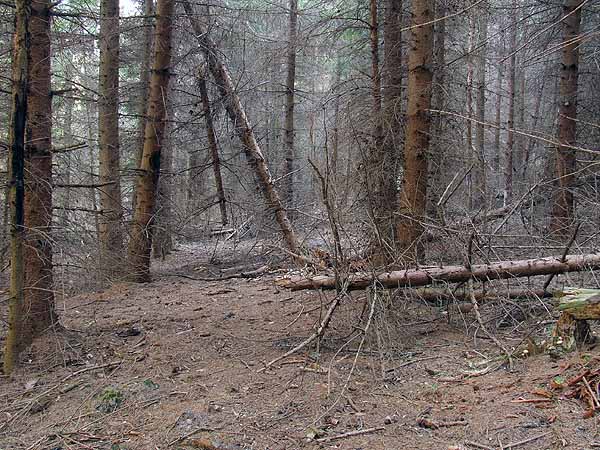
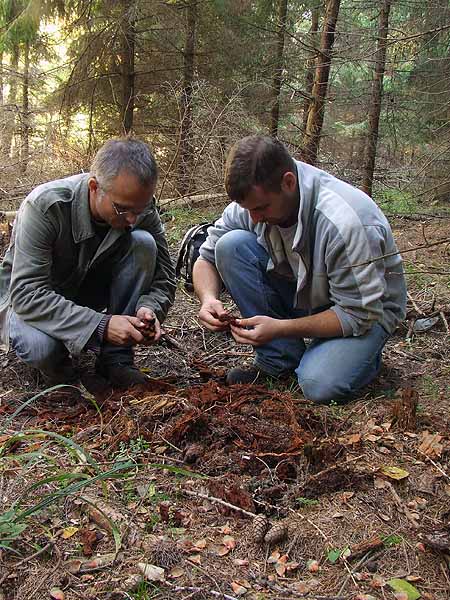
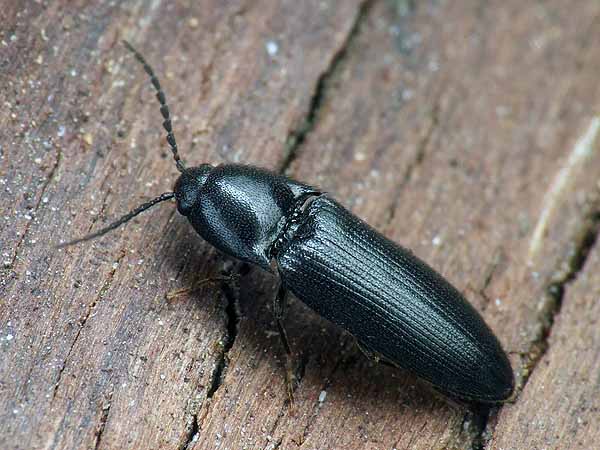
Some hours later
we finally managed to find a
mature spruce stand that was worth looking at. Although there are no
indigenous
conifer forests in Zemplén Mountains, older spruce plantations
harbour several
beetle species associated with conifers. Taking apart moss infested
decaying
logs in the closed and haunting forest, we finally got what we went
for. The
ebony click beetle (Ampedus nigrinus)
just found was somewhat

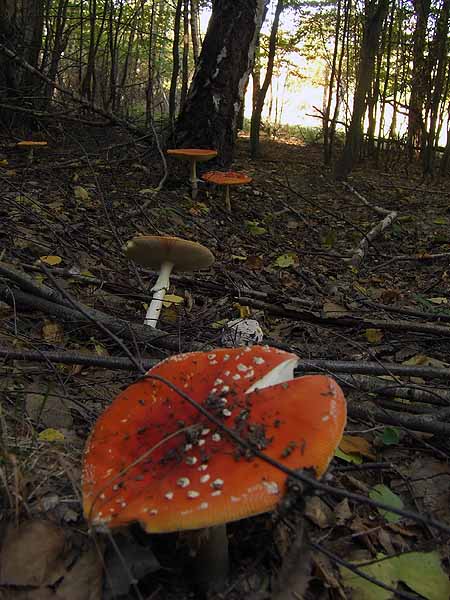

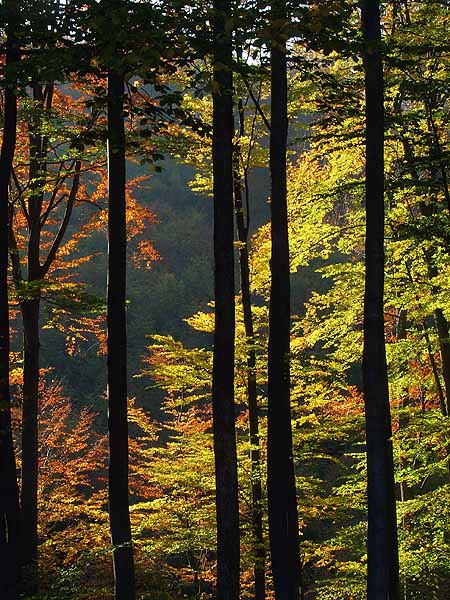
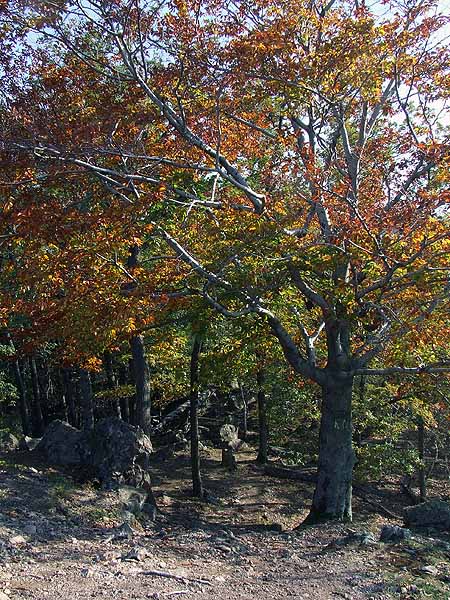

It is always a pleasure
to be lucky to find the
species for which you travel so much. The joy we felt was so great that
we went
on another hike up to a cliff called Kerek-kő, then descended a steep
slope
through a colourful beech wood to the valley where our car was parked.
It was
quite dark when we hit the road and drove some 300 kilometres
back
home.
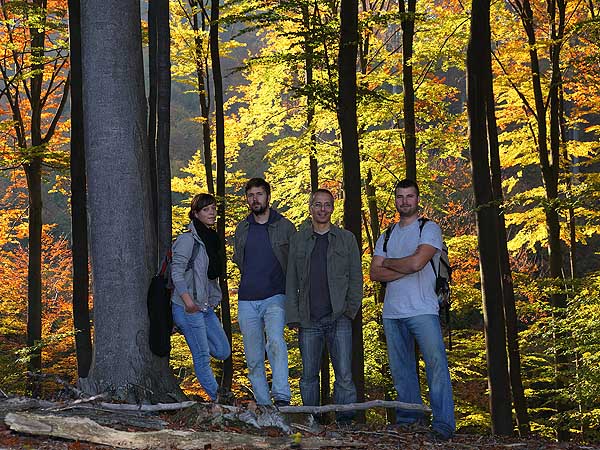
(photo: N. Rahmé)
Copyright
©
2009. Hungarian Natural History Museum,
Department of Zoology, Coleoptera Collection